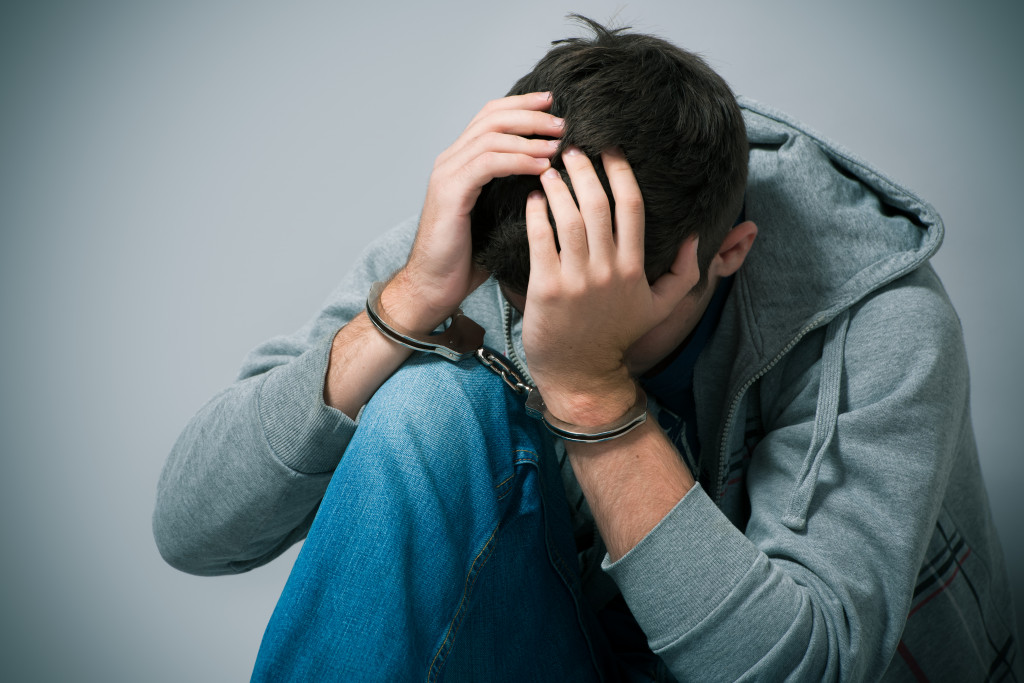In 2019, law enforcement agencies such as local police departments and the Federal Bureau of Investigation reported a total of 696,620 arrests committed by people below 18 years old. Though the most common crimes committed by juveniles are tagged as non-violent misdemeanors, this statistic is still incredibly high and alarming considering that we are talking about the future of the next generation.
Juvenile Crime Explained
Generally speaking, juvenile crime is defined as an unlawful behavior acted by an individual considered as a “minor” or has not yet reached the legal age of 18. However, in several states in the US, the maximum age to be considered a juvenile is sixteen or seventeen. Some states believe teenagers at the age of 14 and above are already fully aware of their actions and can intentionally commit a crime.
Children below seven years old, on the other hand, are believed to be incapable of intentionally committing a crime. However, they can still be charged with homicide if the crime is a repeat offense or considered egregious or horrifying.
How Does Criminal Justice Work?
Though most crimes committed by the youth are somewhat the same as the ones committed by adults, being underage means that they will receive a less severe punishment and enter a juvenile justice system or institution rather than the adult criminal system. In hindsight, teenage offenders are subject to different procedures and laws, unlike their adult counterparts.
A juvenile case usually starts when a police officer apprehends a minor offender. Still, it also mostly begins when a concerned adult such as a parent, guardian, or school official files a report to the juvenile court. The officer will then conduct an evaluation called ‘juvenile delinquency’ and determine whether the case should be forwarded to a social service agency or the court.
Juvenile crimes are heard in special courts. The judge often looks at several aspects that could have influenced the offender, including physical, emotional, and sexual abuse, abandonment, and child neglect.
During the hearing period, and if the case is serious, the child may be held in a juvenile correction facility. This is until the judge decides whether they need to be institutionalized or brought to a shelter or foster home. Unlike adults, juveniles don’t have the option to post bail or bond to obtain release.
Most Common Types of Juvenile Crimes

There are many types of juvenile crimes that are often caused by peer influence and domestic issues. These delinquent acts can range from status offenses, violent crimes, and property crimes. In the United States, the top crime committed by teenagers is theft larceny followed by simple assault. The third is drug use and the fourth being disorderly conduct. Other offenses are:
- Using a Fake ID — Penalties for using a fake identification can range from paying USD 500 for a misdemeanor to serving a year and a half for forgery and criminal impersonation.
- Underage Drinking — In the United States, the legal drinking age is 21 years old. There is punishment for consuming, possessing, or even attempting to purchase alcohol. Offenders may face mandatory alcohol awareness classes, community service, or jail time.
- Driving Under the Influence — Drinking among teens has been common, and driving under the influence is one of their most common offenses. Teens pulled over for this offense are often taken to custody and may face probation, community service, and loss of driver’s license for up to one year. However, while in custody, offenders are allowed to contact their legal guardian and a DUI lawyer.
- Possession of a Gun — A majority of the states prohibit the use and handling a gun for people 18 years old and below. If caught, the offender will be fined and may face community service. There is a possibility that their guardian will be held liable as well.
- Drug Use — Marijuana or cannabis is the most common illegal drug that teenagers use. A juvenile may be charged with the use of controlled substances or possession. Because of this issue, the United States Supreme Court implemented a random drug test for middle and high school students.
Are There Other Options?
Though many youths are being incarcerated, there are still several other options that can be given to them depending on the gravity of their offense. Some institutions focus mainly on rehabilitation as well as mental and emotional healing. They can perform community service and ask for help from social services workers and mental health professionals.
One crime or misdemeanor should not be enough to define a person, let alone a child. They may have committed unlawful acts, but as adults, it is our responsibility to make sure that they do not go on a downward spiral. They may have made mistakes, but they still have a whole future in front of them.

